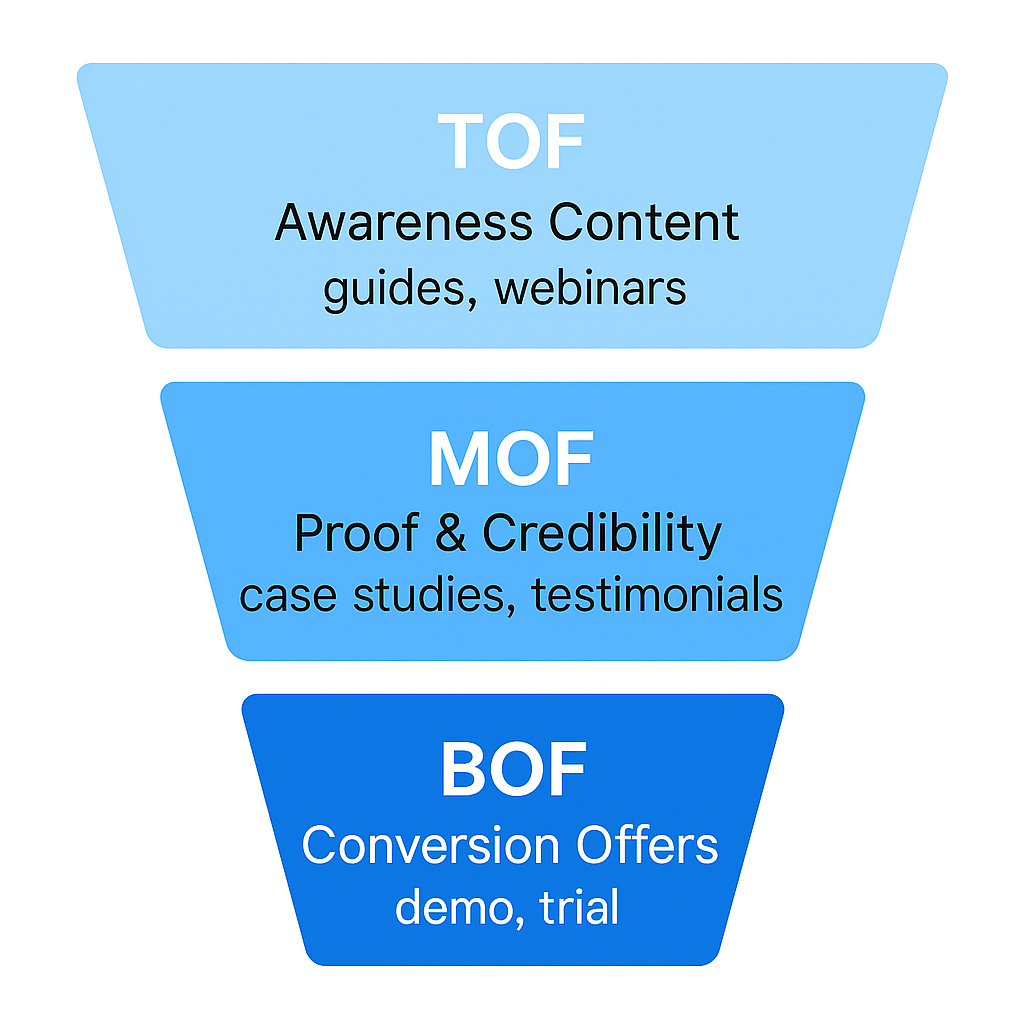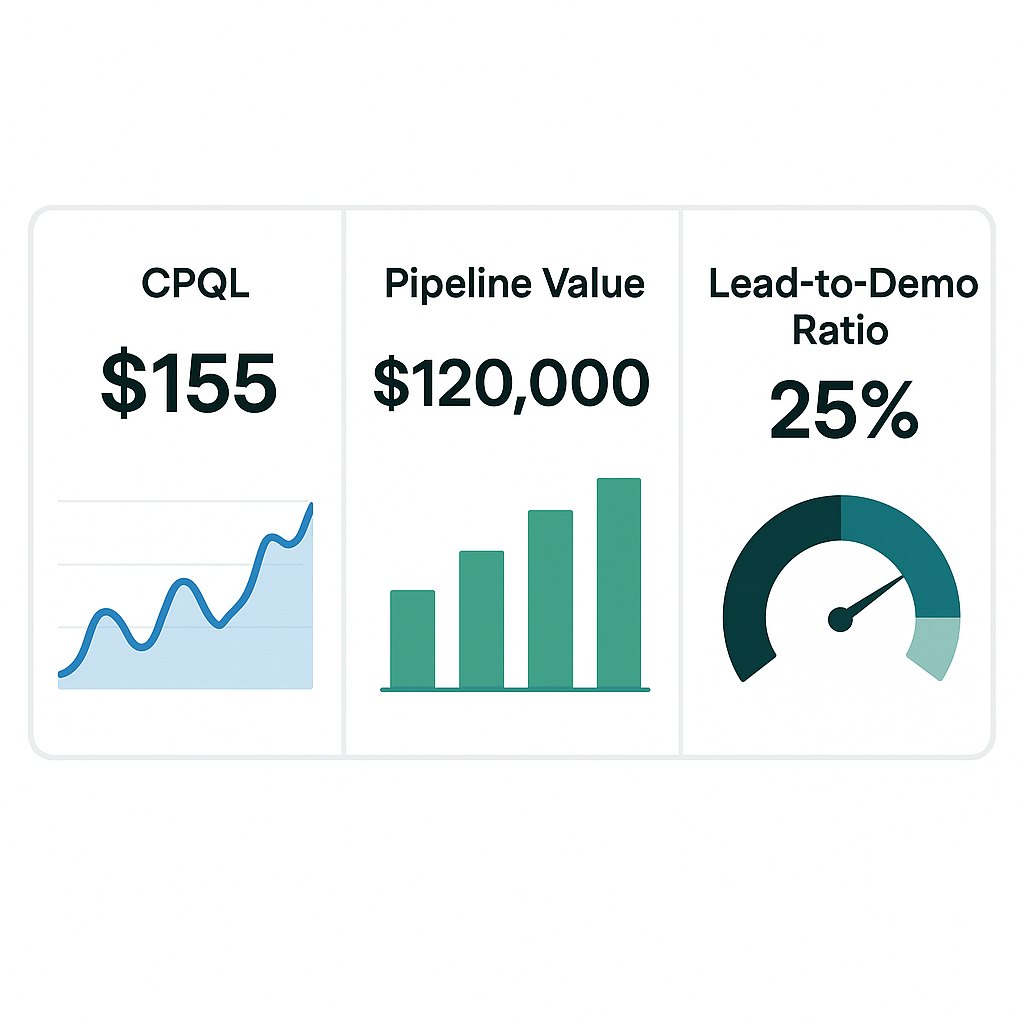Facebook Ads aren’t just for trendy DTC brands. If you’re in B2B, they can be a secret weapon — but only if you know how to play the long game.
While B2C ads focus on quick hits and impulse buys, B2B campaigns require more strategy, more nurturing, and a whole lot more patience.
Let’s break down how B2B companies can use Facebook Ads to attract, qualify, and convert high-value leads — without wasting budget or targeting the wrong people.
1. Structure a Funnel That Reflects B2B Reality
B2B buyers don’t make decisions overnight. They compare vendors, consult teams, and usually need to justify ROI before moving forward. Your ads need to reflect this more complex journey.

Top of Funnel (TOF):
-
Share value-first content such as industry guides, whitepapers, or trend reports. These help your brand get seen as a credible expert.
-
Use low-friction CTAs: "Learn more," "Download free guide," or "Watch the 2-min explainer."
-
Choose campaign objectives like Reach, Video Views, or Engagement to prioritize awareness.
Middle of Funnel (MOF):
-
Retarget your TOF viewers with ads that show how your solution works.
-
Use testimonials, case studies, or webinars to demonstrate credibility and value.
-
Highlight common pain points and show how you solve them with real-world examples.
Bottom of Funnel (BOF):
-
Now it’s time for strong offers: demos, strategy calls, free trials, or pricing calculators.
-
These ads should lead to either a high-converting landing page or an optimized lead form.
-
Think beyond the click: set expectations for what happens next and make it easy to move forward.
Want a visual breakdown of how this works in practice? Our guide to the Facebook Ads Funnel Strategy breaks it down in detail.
2. Choose the Right Campaign Objective
Your campaign objective is what tells Facebook’s algorithm what outcome to prioritize — and who to show your ad to.
In B2B, that choice matters. You might want awareness, but the platform will send you form fillers if you choose the wrong goal.
Here are three smart choices:
-
Lead Generation if you're offering a whitepaper, webinar, or booking opportunity.
-
Traffic if your landing pages are built for conversion and properly tracked.
-
Engagement if you're warming cold audiences with helpful content.
Need clarity on all objective types? This breakdown helps: Meta Ad Campaign Objectives Explained.
3. Target Smarter Than Just Job Titles
Job titles can be unreliable — especially when people don’t update their profiles or Facebook lacks professional data. Here’s how to go deeper:
-
Combine interests (like HubSpot, Salesforce, or B2B SaaS) with behaviors (like Facebook page admins, device usage).
-
Use Lookalike Audiences built from email lists, past leads, or CRM exports. This tells Meta: “Find people similar to my best customers.”
-
Apply layered exclusions to prevent overlap or reduce waste (e.g., exclude past converters or low-intent engagers).
-
Set up custom audiences from users who visit key web pages, interact with your posts, or start a form but don’t finish.
Want a better foundation for targeting? Read Facebook Ad Targeting 101 for a full walkthrough.
4. Lead Forms: Fast Doesn’t Mean Lazy
Facebook Lead Ads are popular in B2B because they reduce friction. But they often fail when you go for quantity over quality.
Instead:
-
Use custom questions like: "What’s your team size?" or "What tool are you currently using?"
-
Always include a short intro section that sets expectations for what the lead will receive.
-
Connect your forms directly to your CRM, so sales gets notified instantly.
-
A/B test long vs short forms and monitor the difference in lead-to-close rate.
Want to go deeper? Check out How to Use Facebook Ads for High-Quality Lead Generation.
5. Track the Metrics That Actually Matter
B2B success lives in your CRM, not in your Ads Manager dashboard.

Vanity metrics like CTR or impressions don’t mean much if your leads are unqualified. Instead, track:
-
Cost per qualified lead (CPQL) — not just CPL
-
Pipeline value per ad set or audience
-
Lead-to-demo rate and lead-to-close rate
-
Time to conversion (some leads close in 3 days, others in 3 months)
Connect Facebook to your CRM via the Conversions API and track offline events. It takes extra setup — but you’ll actually know what’s working.
Having trouble getting traction? You might be hitting a common barrier. See Why You See 'Ad Set May Get Zero' on Facebook and How to Fix It.
6. Use Content as a Trust Builder
Decision-makers don’t convert because you have a cool ad. They convert because they trust your brand.
That’s why smart B2B marketers build content-driven retargeting pools. Instead of a hard sell upfront, promote:
-
Short industry webinars
-
Bite-sized case studies
-
Mini tutorials or quick wins
-
Thought leadership content
Every click, every view builds familiarity — and makes the next touchpoint easier to convert.
7. Retarget With More Precision
Retargeting isn’t just a second chance — it’s the most powerful B2B tactic on Facebook. But only if it’s segmented.
Here’s how to do it better:
-
Separate custom audiences by engagement level: eBook downloaders vs. video watchers.
-
Show BOF offers (like demos) to high-intent segments only.
-
Use objection-handling creatives: FAQ carousels, "What to expect" videos, or pricing explainers.
-
Extend your retargeting window up to 90 days. B2B leads take time.
For a full step-by-step, use this as your guide: How to Set Up Facebook Retargeting.
Final Thoughts
Facebook Ads for B2B don’t work like B2C. They take time. They require layered strategy. And they only pay off if you treat them like part of your sales process — not a shortcut.
Focus on warming up the right people, tracking quality over quantity, and building a retargeting system that respects the B2B decision cycle.
If you get those fundamentals right, you’ll stop wondering whether Facebook works for B2B. You’ll be too busy following up on qualified leads.

